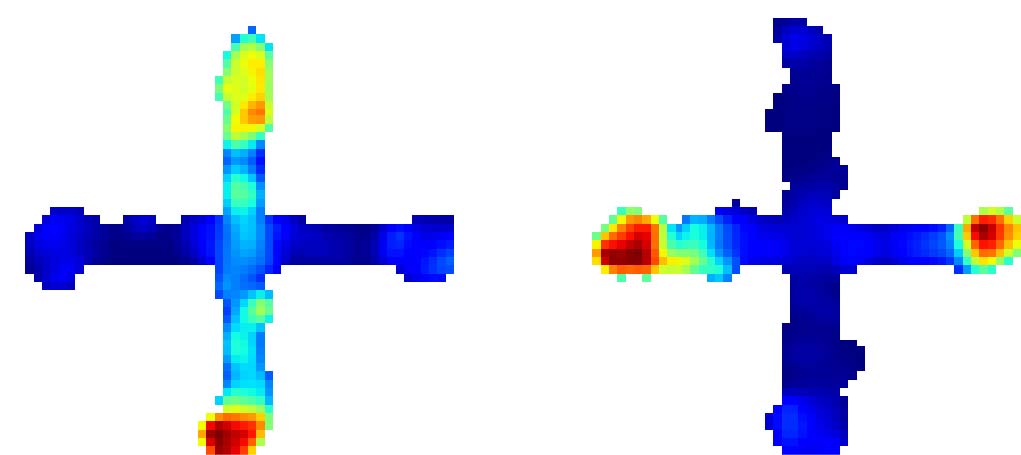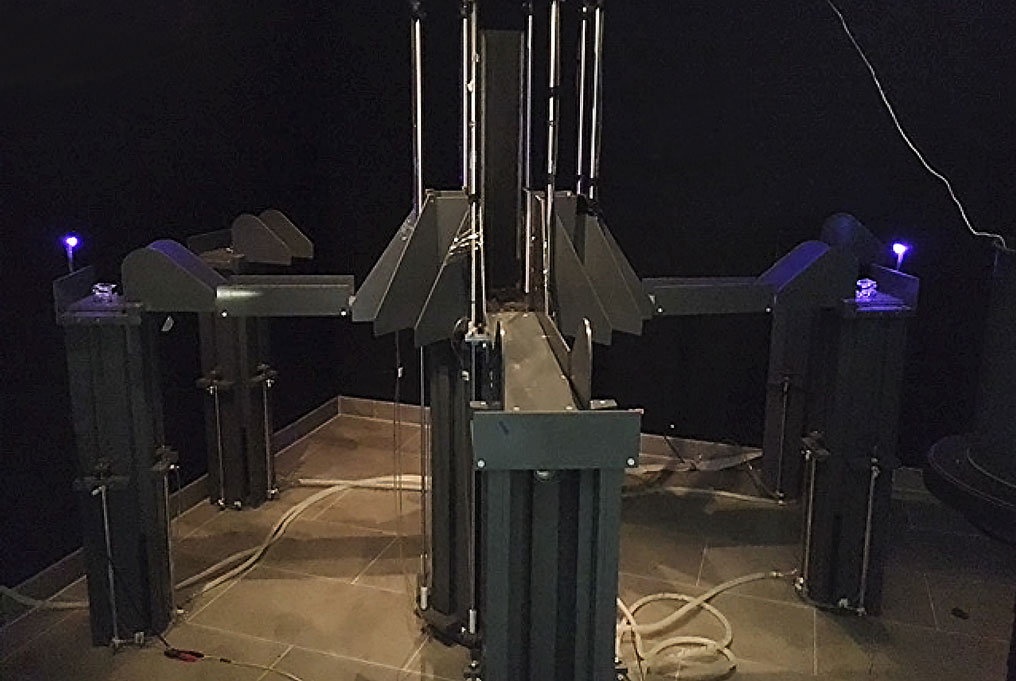February 6, 2020
Turn left or right? This brain area helps us decide
Medial prefrontal cortex supports flexible behavior when rules change – Study published in Neuron

While we navigate through space, how do we adapt to a sudden change in rules of which way to go to reach our goal? Neuroscientist Jozsef Csicsvari and his group at the Institute of Science and Technology Austria (IST Austria) have looked more closely at the medial prefrontal cortex (mPFC) to find out that activity replay in this brain region supports the execution of cognitive tasks when rules change. Their study was published in the journal Neuron.
Complex cognitive tasks, such as navigating through space, involve various brain areas that may work in concert or be required at different points in time. We already know that during navigation, the brain region of the hippocampus plays a central role. There, specialized neurons called place cells make a mental map of the environment we navigate in, as each neuron is only active at specific locations. When we sleep, the activity patterns of these place cells are replayed by the hippocampus to form memory. This replay also happens during awake times, yet for a different purpose, most likely to help in evaluating past and future choices.
The less well studied brain area of the medial prefrontal cortex (mPFC), on the other hand, has been suspected to be involved in cognitive tasks where rule switching is required, i.e. when rules or conditions suddenly change. A rule switching-dependent replay of neurons in the mPFC has been shown during sleep, but it has been unclear so far whether the mPFC can also replay extended activity patterns in the awake state and if so, what information the reactivated neuronal patterns code for and how they relate to the information encoded by the hippocampus.
Prefrontal cortex generalizes location information
To find out about neuronal activity in the mPFC, neuroscientist Jozsef Csicsvari and his team at the Institute of Science and Technology Austria (IST Austria) conducted rule switching experiments: rats were put in a plus-shaped maze to find a reward which had been placed according to one of two pre-defined rules. In one case (rule A), the reward was always located in the same arm, while in the other case (rule B), a light at one of the maze arms guided the animal where to go for the reward. While the rats were navigating through the maze, the scientists measured the electrical signals fired by neurons of the hippocampus and the medial prefrontal cortex to investigate the rats’ behavioral adaptation following a rule switch.

The analysis of electrical signals demonstrated that both the mPFC and the hippocampus were engaged in the rule switching task. However, it was not immediately obvious how activity in these two areas relates to each other. While the rats were moving through the maze, neurons in the mPFC fired in relation to the maze arm locations—similar to the hippocampus. However, unlike in the hippocampus, where neurons fired at a specific location at a specific arm, neurons in the mPFC generalized information and fired at similar relative locations at different starting and reward arms. In other words, the medial prefrontal cortex generalized the information which is represented by the hippocampus.
A mental map of relative position
Furthermore, similar to the hippocampus, Professor Csicsvari and his team also found in the prefrontal cortex that during brief time periods—for instance, when the rats stopped at the crossroad before taking a turn into one of the maze arms, or while they were stopping to eat the reward—neurons fired in a sequential order and in doing so recapitulated maze trajectories. Therefore, the neurons reactivated or replayed the experience of the animal moving through the maze. But, while in the hippocampus, the activity patterns replayed represented specific trajectories of movement in specific arms, in the prefrontal cortex, these were generalized trajectories of relative positions of movement.
Reflect, plan, decide
Importantly, the number of times the scientists saw such reactivation in the mPFC—but not in the hippocampus—predicted how quickly the animal would switch its behavioral strategy from one rule to the next. PhD student and first author Karola Käfer: “At the first switch from rule A to rule B, it took the rats several hundreds of times, over several days of training, to learn and finally adapt their navigation to an unannounced switch in rules. Later, the rats managed to switch between rules much faster and there are indications that replay in the mPFC during short immobility phases help the rat to find the reward much faster.”
Professor Jozsef Csicsvari sums up: “The medial prefrontal cortex has been suspected to be involved in the adaptation of a prevailing behavior strategy to a change in rules. We were now able to link this process to specific neuronal activity, i.e. the replay of activity patterns in the mPFC during awake times that code for relative position, complemented by specific location coding by the hippocampus. It can now be hypothesized that replay in these brain areas during the awake state may not necessarily play a role in long-term memory formation, but rather in immediate reflection, planning and decision-taking.”
Publication
Karola Käfer, Michele Nardin, Karel Blahna & Jozsef Csicsvari. 2020. Replay of behavioral sequences in the medial prefrontal cortex during rule switching. Neuron. DOI: 10.1016/j.neuron.2020.01.015
Funding information
This project was supported by a grant from EU-FP7 MC-ITN IN-SENS (#607616).
Animal welfare
Understanding how the brain works is only possible by studying the brains of animals while they carry out specific behaviors. No other methods, such as in vitro or in silico models, can serve as alternatives. The animals were raised, kept and treated according to the strict regulations of Austrian and European law.



